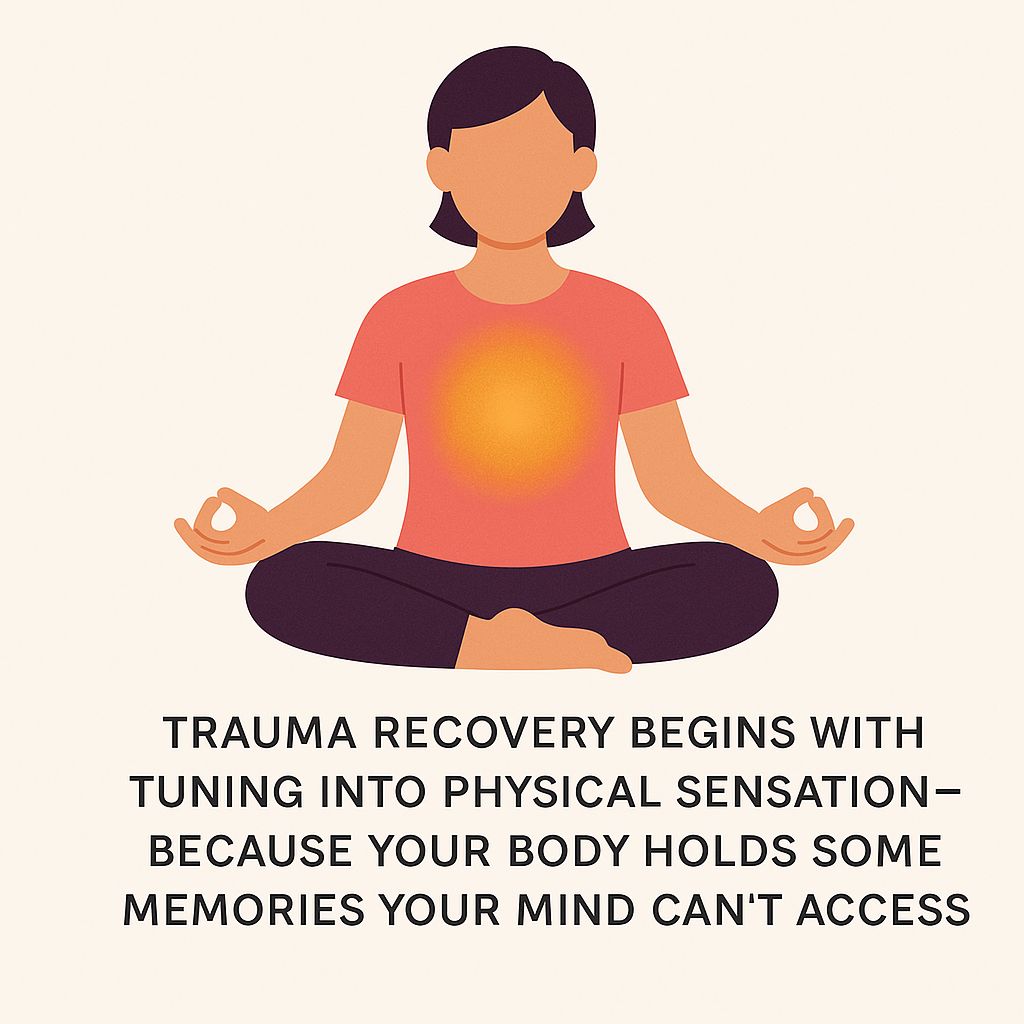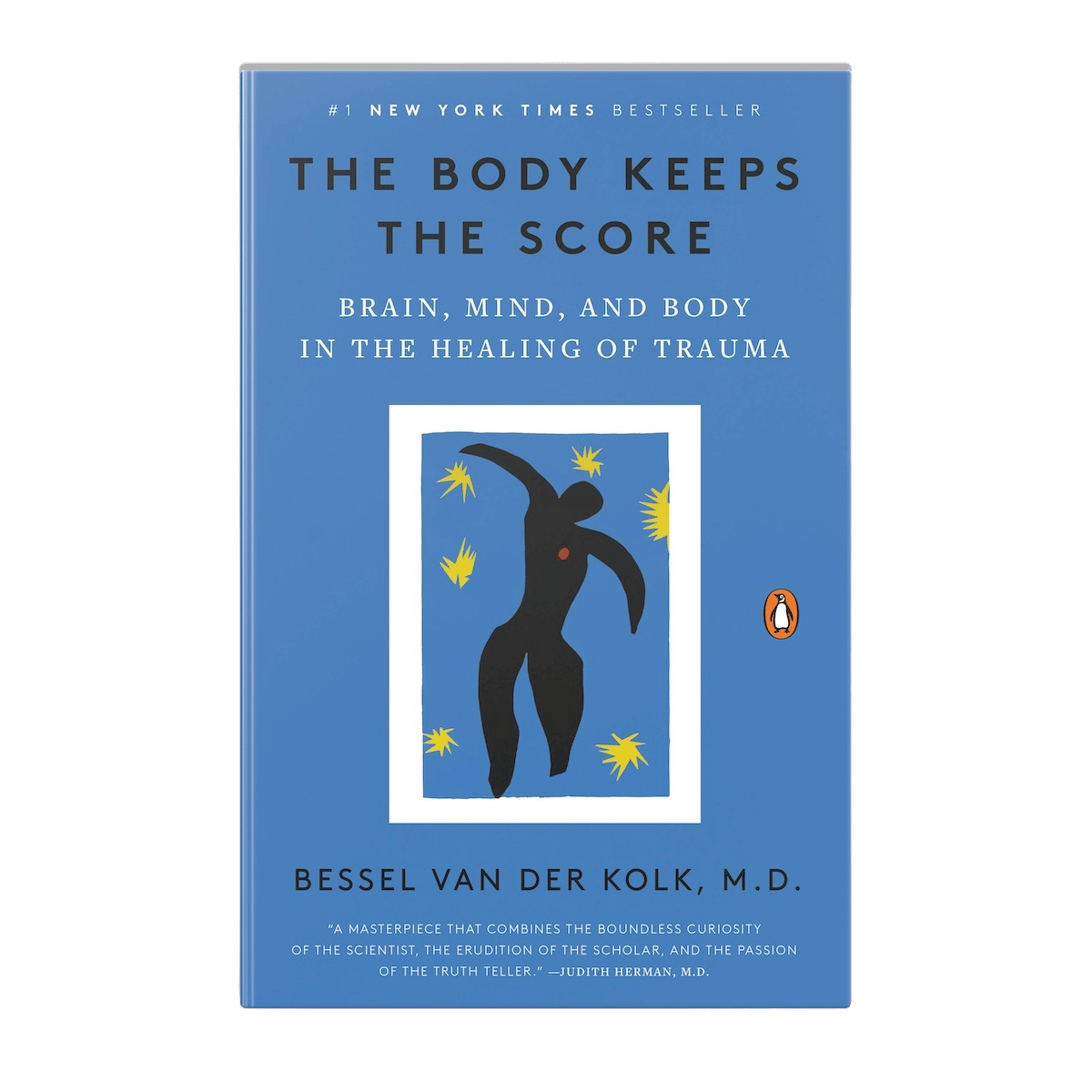- Mental Health Mail
- Posts
- Notes From The Bestselling Book On Trauma
Notes From The Bestselling Book On Trauma
It's not all in your head: Trauma recovery and the physical sensations.

📖 This month’s pick:
A go-to for understanding trauma as something we carry in the body, not just the mind. |
💡 3 Paths to Healing Trauma
Dr. van der Kolk outlines three primary approaches to healing:
🧠 Top-down – through talk therapy
💊 Medical – using pharmaceutical support
🧘 Bottom-up – by working directly with the body (movement, breath, touch, rhythm)
👉 This book focuses on that third path—the one we often overlook, but so often need.
✨ The Biggest Lesson
The Body Keeps the Score quickly reshaped how I understood what had happened to me—and what I needed to do next.
“In order to change, people need to become aware of their sensations and the way that their bodies interact with the world around them. Physical self-awareness is the first step in releasing the tyranny of the past.”
That insight changed me.
It shined a light on all the unexplainable episodes I had been experiencing for years.
I began to notice how I would feel uncomfortable sensations and then go on autopilot— without realizing it until it was too late.
I began to see that frequently, I was triggered by words or actions that felt (somatically) close to my worst traumatic experience.
First, “I’d feel something awful and my mind went blank.”
Next, I’d observe myself reacting defensively, seemingly unable to choose my actions.
Then, I’d regain control and ask myself: “Why am I like this?”
Finally, I would (defensively) stand accountable for behavior words I knew I was responsible for but felt I had little control over. I would despair for the rest of the day or more.
“Being traumatized means continuing to organize your life as if the trauma were still going on—unchanged and immutable—as every new encounter or event is contaminated by the past.”
I realized in these episodes I wasn’t reacting to the present moment—I was reacting to memories of similar moments from the past.
Those memories live in our physical body as somatic sensations, not just stories in the mind.
“Trauma victims cannot recover until they become familiar with and befriend the sensations in their bodies.”
I began learning to pay attention and name what I was feeling:
Tight chest 😮💨
Sour stomach 🤢
Neck tension 💥
Like no one will listen 👂
Like I need permission 🔑
Like I don’t have a choice 🔒
This is what Dr. van der Kolk calls healing from the bottom up—and it’s what helped me start interrupting the cycles that kept me stuck.
🔍 What I Discovered
I had to relearn how to interpret what I felt—not through the lens of my past, but from where I am now.
The meanings I assigned to physical sensations weren’t wrong—they were just outdated.
I used to interpret certain sensations as hunger, when they were often signals of sadness or emptiness—patterns formed in a time when food was one of the few comforts I had.
What I thought was fear was often just the feeling of being vulnerable.
One of the most confusing: I often mistook a deep need for emotional attunement for sexual desire. (Not that they’re always separate—but I couldn’t tell the difference.)
Learning to pause, question the sensations, and be open to feeling them—without immediately shutting them down or running—helped me untangle these signals and reassign meaning to those sensations.
Over time, I developed a better relationship with gut instincts, subconscious cues, and intuition itself.
💪 What Helped Me Most
Getting in touch with my body didn’t happen overnight.
I’d spent years dissociating—not just from pain, but from the sensations that communicated between my body and brain.
But here’s what I’ve learned:
When you dull the pain, you also numb the joy.
Eventually, I began rebuilding a relationship with my body. Not perfectly, but consistently—through practices like:
✍️ Journaling
🧠 Therapy
🏃 Running
🧘 Meditation & Yoga
🌬️ Breathwork
🆓 Totally free to learn on YouTube.
👉 Want my favorite teachers or guided videos?
Just reply to this email and I’ll send you some of the best ones I’ve found.
📚 Why This Book Matters
The Body Keeps the Score isn’t just a book on trauma—it’s a practical guide for reconnection and recovery.
It’s especially powerful for anyone who feels:
✅ Stuck in patterns they can’t explain
✅ Emotionally shut down
✅ Disconnected from their body
Dr. Van der Kolk combines neuroscience, real patient stories, and body-based practices like breathwork, yoga, and movement into a framework that makes healing feel possible—even gentle.
If you’ve ever felt numb to life, or like something is happening to you before you can respond—this book shows you why. And more importantly: what to do next.
📘 Want to Read?
The Body Keeps the Score
💲 ~$10 in paperback
(Click “Read Sample” or “Audible Sample” to preview without buying.)
📖 Want to Go Deeper?
Includes chapter recaps, insights, and journal prompts to help you reflect and apply what you read.
🌱 A Gentle Reminder
If the idea of tuning into your body feels new—or even a little scary—you’re not alone.
This is deep, tender work.
Take your time.
And if it feels right, start small. Maybe with the audiobook version, or just a sample chapter.
No rush.
Just the invitation to begin.
